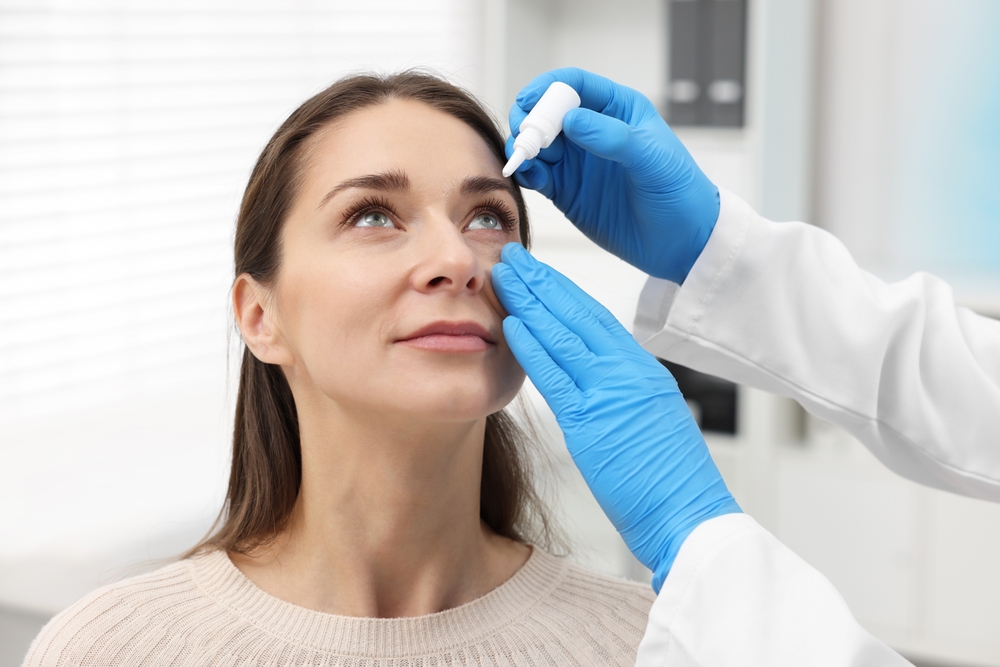
Dry eye syndrome is a common and often chronic condition that affects millions of people worldwide. This eye disorder occurs when your eyes do not produce enough tears or the tears evaporate too quickly, leading to discomfort, irritation, and potential vision problems. Recognizing the signs and symptoms of dry eye syndrome is the first step towards finding the right treatment and regaining control over your eye health.
Causes and Risk Factors of Dry Eye Syndrome
Dry eye syndrome can be caused by a variety of factors, both environmental and physiological. Understanding the underlying causes is crucial in developing an effective treatment plan.
Aging: As we grow older, our tear production naturally decreases, making us more susceptible to dry eye syndrome. This is particularly common in individuals over the age of 50.
Gender: Women, especially those going through hormonal changes such as menopause, are more prone to developing dry eye syndrome.
Medications: Certain medications, including antihistamines, decongestants, and antidepressants, can disrupt the normal tear production process and contribute to dry eye.
Environmental Factors: Exposure to dry, windy, or air-conditioned environments, as well as prolonged use of digital devices, can accelerate tear evaporation and lead to dry eye symptoms.
Medical Conditions: Underlying health conditions, such as Sjögren's syndrome, rheumatoid arthritis, and thyroid disorders, can also increase the risk of developing dry eye syndrome.
Meibomian Gland Dysfunction (MGD): MGD is a leading cause of dry eye syndrome, as it affects the production and quality of the oil (meibum) that helps to stabilize the tear film.
Understanding these causes and risk factors can help you and your eye care provider develop a personalized treatment plan to address the root causes of your dry eye syndrome.
Common Symptoms of Dry Eye Syndrome
Dry eye syndrome can manifest in a variety of symptoms, which can vary in severity and impact your daily life. Some of the most common symptoms include:
Dry, gritty, or burning sensation in the eyes
Redness and irritation
Blurred or fluctuating vision
Sensitivity to light and wind
Excessive tearing or watery eyes
Discomfort when wearing contact lenses
Difficulty with tasks that require sustained visual focus, such as reading or using a computer
The severity of these symptoms can fluctuate and may worsen in certain environmental conditions or during specific activities. Recognizing and reporting your symptoms to your optometrist is crucial for proper diagnosis and the development of an effective treatment plan.
The Importance of Proper Diagnosis
Accurate diagnosis is the key to effective management of dry eye syndrome. Your optometrist will perform a comprehensive eye examination, which may include the following diagnostic tests:
Tear Film Evaluation: Your provider will assess the quantity and quality of your tear production, as well as the stability of your tear film.
Ocular Surface Examination: A detailed examination of the front surface of your eye, including the eyelids and meibomian glands, can help identify the underlying causes of your dry eye.
Diagnostic Imaging: Advanced imaging techniques, such as meibography, may be used to visualize the structure and function of your meibomian glands.
By undergoing a thorough diagnostic evaluation, your eye doctor can determine the specific type and severity of your dry eye syndrome, as well as identify any underlying contributing factors. This information is crucial in developing a personalized treatment plan that addresses the root causes of your condition and provides the most effective relief for your symptoms.
Treatment Options for Dry Eye Syndrome
The treatment approach for dry eye syndrome is tailored to your individual needs and the underlying causes of your condition. Over-the-counter artificial tears and lubricating eye drops can provide temporary relief for mild to moderate dry eye symptoms. These products work by supplementing the tear film and reducing evaporation. Your doctor may recommend specific brands or formulations based on your individual needs.
In more severe cases of dry eye, your provider may prescription eye drops to help reduce inflammation and improve tear production. Certain oral medications, such as omega-3 fatty acid supplements, can also help improve the function of the meibomian glands.
For individuals with severe or persistent dry eye syndrome, your doctor may recommend more advanced treatment options. Low Level Light Therapy (LLLT) is a non-invasive treatment that uses specific wavelengths of light to stimulate cellular activity and promote healing in the eye area. By enhancing blood flow and reducing inflammation, LLLT targets the root causes of dry eye, helping to alleviate symptoms such as irritation, dryness, and discomfort. This therapy is gentle, painless, and can be performed in-office, making it an effective option for patients seeking relief from chronic dry eye symptoms.
Your optometrist will work closely with you to determine the most appropriate treatment plan based on the underlying causes of your dry eye syndrome and the severity of your symptoms.
Schedule Your Dry Eye Evaluation with Unique Eyecare & Optical Today
Dry eye syndrome is a prevalent and often chronic condition, but with the right understanding and treatment approach, you can take control of your eye health and find relief from the discomfort and disruption it can cause in your daily life. Proper diagnosis and a tailored treatment approach are key to managing your dry eye effectively.
If you're struggling with the symptoms of dry eye syndrome, schedule a consultation with Unique Eyecare & Optical. Dr. Gaston will work with you to identify the underlying causes of your condition and develop a personalized treatment plan to provide lasting relief. Visit our office in Houston, Texas, or call (713) 522-2007 to book an appointment today.










